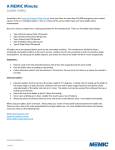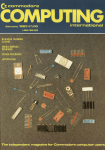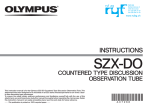Download Ladders - Pony Club Australia
Transcript
Number 1 STANDARD OPERATING PROCEDURE LADDER 2 WARNINGS: 2.1 2.2 • • • Ladders • • Poorly maintained or defective ladders • Working at heights • Using conductive ladders when using electrical equipment, adjusting lighting or working near electrical sources • Lifting heavy ladders • Slippery surface • 1 INTRODUCTION • 1.1 1.2 • • • This Standard Operating Procedure (SOP) describes the safe working procedures of the following machine: • Intended application: Climbing. • 1.3 Principle of operation: One foot after the other: Common name: Ladder • • • Date: August 2013 Version: 01 Next Review: August 2014 Safety Precautions: • See Risk Assessment Do's and Don'ts: Inspect all ladders before using; look for cracks, breaks or weak points. If found defective DO NOT USE and replace. Ensure steps are dry and clean Locate base of ladder on firm, level and solid footing. Secure as necessary to provide stability. All ladders should be adequately supported at the base. Do not erect ladders on slippery or soft surfaces. Ensure that ladders are not set at slope of greater than 4 to 1 Ensure the ladder is appropriate for the work being performed. Is it high enough? Is the ladder made of non-conductive material if using electrical equipment or working with anything connected to power? Etc. Long and heavy ladders (greater than 20kg) should be handled by at least two people Do not use metal or conductive ladders near electrical lines or equipment Do not climb above manufacturer's recommended height as marked on the ladder. This is usually the second step from the top of the ladder. Always wear fully enclosed slip resistant footwear. Do not exceed manufacturer's weight capacity for the ladder. Always use stepladders in fully opened and locked position. NEVER – Use equipment if a danger tag has been attached. ALWAYS - Report all faults to Team leader. Authorised by: State Executive Pony Club Association NSW Inc. - Uncontrolled when printed Number 1 STANDARD OPERATING PROCEDURE LADDER the ladder in the best possible condition. 3 M ACHINE ENVIRONMENT 3.1 • • • • • See section 4 or manual for details on controls. lighting ventilation dust appropriate clothing and footwear maintenance and inspection 5.1 5.1.1 As Needed: • Clean as required 5.1.2 Daily: • Clean exterior surface • Do not use abrasive solutions on these surfaces. 4 OPERATION • • appropriate clothing and footwear ensure lighting is adequate 4.1 Usage Inspect all ladders before using; look for cracks, breaks or weak points. If found Defective PLACE A DO NOT USE TAG on the unit and report it to your team leader. ♦ Steps are dry and clean ♦ Locate base of ladder on firm, level and solid footing. Secure as necessary to provide stability. ♦All ladders should be adequately supported at the base. Do not erect ladders on slippery or soft surfaces. ♦ Ensure that ladders are not set at slope of greater than 4 to 1 ♦ Ensure the ladder is appropriate for the work being performed. Is it high enough? Is the ladder made of non-conductive material if using electrical equipment or working with anything connected to power? Etc. ♦ Long and heavy ladders (greater than 20kg) should be handled by at least two people 5 MAINTENANCE To ensure reliable and trouble free operation, it is the user’s responsibility to maintain Date: August 2013 Version: 01 Next Review: August 2014 General Maintenance. For general maintenance see manual 5.1.3 Weekly • Check all aspects 5.1.4 Monthly • Walk round inspection 6 TROUBLE SHOOTING Common problems that may occur are described in detail in the user manual. Refer to this document for detail. When a fault occurs it must be reported immediately to the Team leader. 7 7.1 REFERENCES Copies: A copy of the SOP is kept where ladders stored. Location of original: In filing cabinet in club house and in soft copy format on Safety Officers computer. 7.2 Applicable Act or Legislation: • WHS Act 2011 • WHS Regulations 2011 7.3 Australian Standard 1892 Portable Ladders Authorised by: State Executive Pony Club Association NSW Inc. - Uncontrolled when printed








